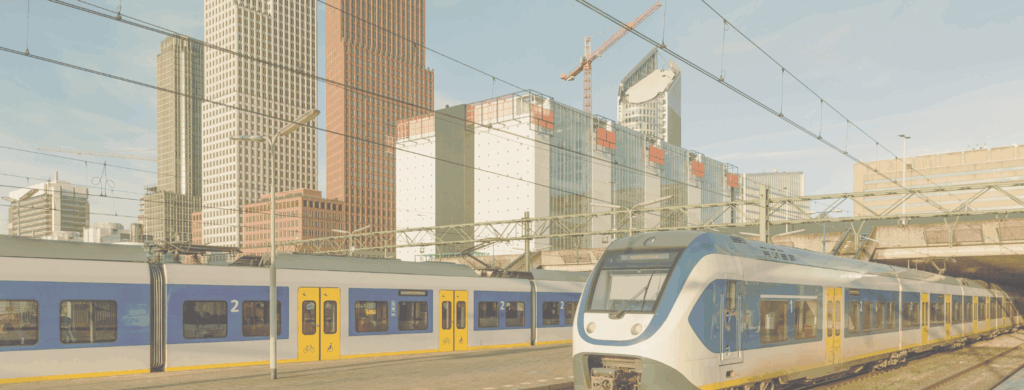
Looking for a new way
“Initially, we had our own digital reporting system,” says Erik Nijland, senior consultant at Arcadis Netherlands. “But it was nearing the end of its lifecycle. We found that building a reporting tool wasn’t the core business of our own IT department. That’s why we started exploring what was available in the market.” Heijmans was already working with VeiligWerk at the time, so Arcadis contacted them about their experiences. After hearing their enthusiasm, they decided to implement VeiligWerk as well.
This required a significant change to the app: the VeiligWerk app essentially handles reporting based on projects. This had to be based on managers, as they are responsible for employee safety and should therefore be the first to know. After this adjustment, Arcadis launched with a pilot team and only a few modules to keep the process as accessible as possible. This was a success, and since then the use of the Track to Zero app, as the VeiligWerk app is called internally, has been rolled out to all departments of Arcadis Netherlands.
“The app is truly the linchpin of our safety culture.”
10.000 reports
Since the app’s official launch in February 2020, the company has now received nearly 10,000 reports. “We’re going to celebrate for a while!” laughs Marije Fokkinga, QHSE manager at Arcadis. Within those 10,000 reports, they’ve also seen a significant increase in the quality of reports. “Almost everyone starts by reporting staples in the carpet and loose shoelaces,” says Erik. “Then managers sit down with the person who reported the incident to encourage them to make future reports more thorough. Sometimes such a conversation reveals that a much more serious situation was behind the report.”
“By engaging in a conversation with a person who reported the incident, they immediately know that something is being done about the reports,” Marije adds. Managers and senior employees are truly driving the initiative at Arcadis. By setting the right example, they also teach new or more junior employees the desired, safe behavior. “If you receive a lot of reports, you really have to do something about them. Otherwise, people will think it’s pointless. That’s not always easy, because you don’t have control over everything and can’t always respond quickly, but you do have to keep working on it and provide feedback. Your manager plays a crucial role in this,” says Marije.
“Caring about safety doesn’t stop once you step out the door here, you take it home with you.”
Safety as part of the Arcadis DNA
Safety at Arcadis doesn’t stop the moment colleagues leave the office; it’s part of the company DNA, and that carries over into their homes. Colleagues are not only encouraged to report situations they encounter at work, but if there’s a lesson to be learned from their personal lives, they can also report it. “For example, a colleague heard her carbon monoxide detector beeping this morning. She initially thought it was a dead battery. Nevertheless, she checked the carbon monoxide level in her home, and it turned out to be far too high.” This report was turned into a safety share. By raising awareness, you can ensure that colleagues in similar situations also act appropriately. “That’s really the value of the app for us: knowing what’s going on, knowing what’s happening,” says Marije.
Working together towards a safety culture
Not only is safety culture being actively developed internally, but other companies are also seeking collaboration. Arcadis initiated the VeiligWerk, Samen Sterk (Safe Work, Strong Together) event, where users of the VeiligWerk app come together to discuss how they can make even better use of the app. It’s great to see that this event has been repeated annually, each time hosted by a different user.
They are also exploring the value of a safety culture circle for architects and engineering firms. Initially, it took some getting used to. “Colleagues said, ‘I’m not going to put all the stupid things I’ve done in an app, am I?’ That’s slowly changing. It’s the same for companies: you can learn from each other, but you have to be open to each other and honestly share your challenges,” says Marije. Within steps 2 and 3 of the safety culture ladder (SCL), sharing can sometimes feel forced, but at steps 4 and 5, it’s more of an invitation.
Are the safety experts done with their work now? “Absolutely not,” says Erik. “We keep communicating about it, we keep talking about it. From a safety perspective, you tend to focus on what’s not going well yet and forget to appreciate what you’ve already achieved. Sometimes new people come to Arcadis and say, ‘I’ve never worked for a company that puts so much emphasis on safety.’ Then we’re doing something right.”
Digitise your safety processes
See how SafetyFirst can help improve your organisation’s safety processes.
